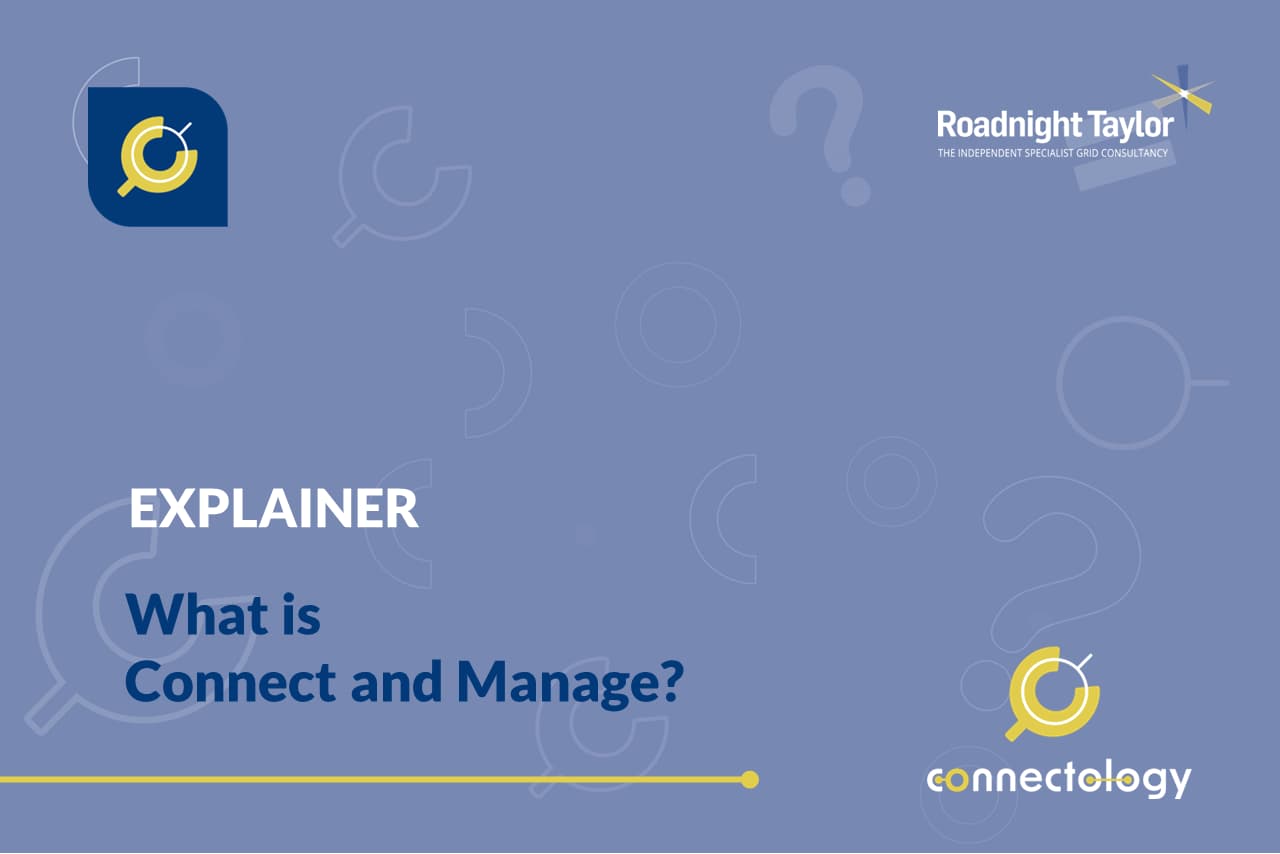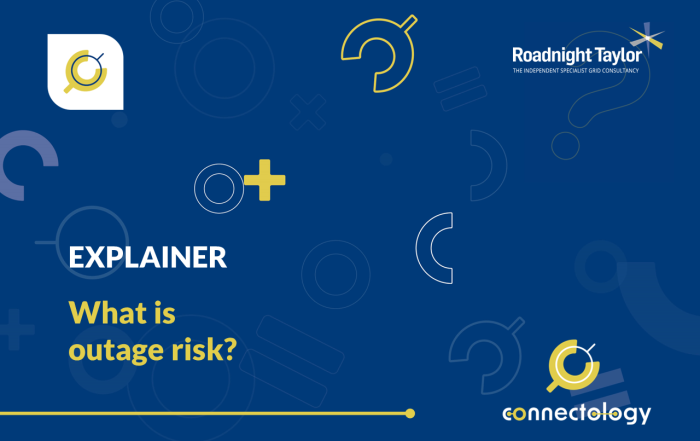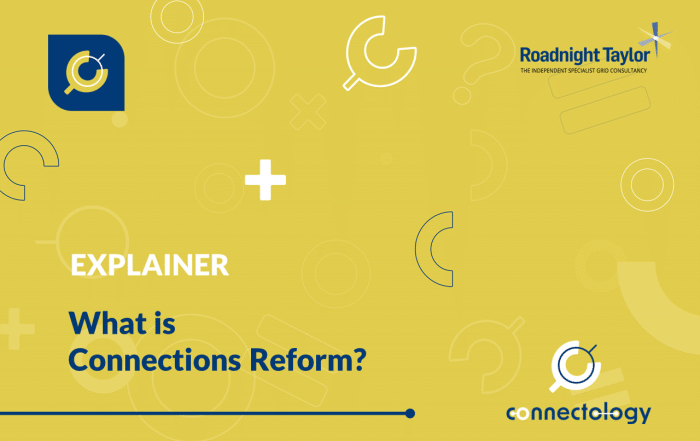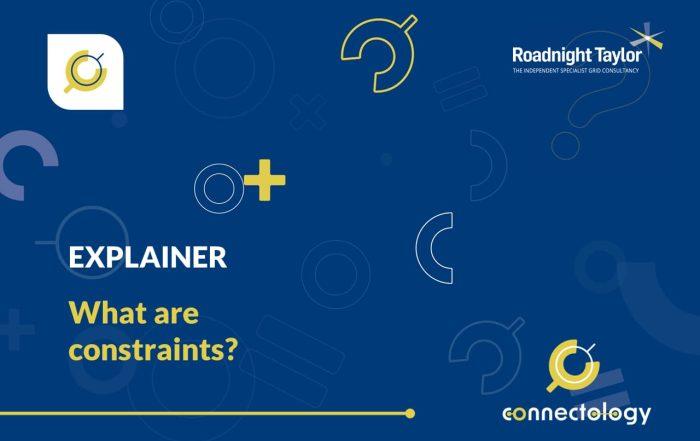What is Connect and Manage?
Connect and Manage (C&M) was introduced in 2010 as a way to improve access to the transmission system for transmission-connected generators.
Article by Pete Aston – acknowledged expert in networks
Pete joined Roadnight Taylor from Western Power Distribution, the UK’s largest DNO, where he was Primary System Design Manager. He led a team of sixty responsible for all connections to the extra high voltage network, as well as leading WPD’s interaction with National Grid (NGET and NGESO) at the transmission/distribution boundary.
First written: 12 April, 2023. Updated 13 March, 2025.

Overview
Connect and Manage (C&M) was introduced in 2010 as a way to improve access to the transmission system for transmission-connected generators. This was driven to a large extent by onshore wind in Scotland being delayed by significant transmission reinforcement works, such as the 200km Beauly – Denny 400kV overhead line project.
C&M introduced the terms Enabling Works and Wider Works in relation to reinforcement works triggered by a generator, which are defined as follows:
- Enabling Works – minimum transmission reinforcement works which need to be completed before a generator can connect to and be given firm access to the transmission network.
- Wider Works – all other transmission reinforcement works associated with accommodating the new generator to ensure compliance with the Security and Quality of Supply Standards (SQSS).
The Enabling Works effectively dictate the timescale of the connection. The more Enabling Works, the longer the time taken to connect. Enabling Works can be thought of as containing two separate activities (although they are both treated the same). One is the work required to physically connect a generator into the Main Interconnected Transmission System (MITS), such as extending a busbar to accommodate a new circuit breaker bay in a substation. The other is the minimum reinforcement needed to meet the C&M criteria (which are defined in CUSC Section 13), such as reconductoring an overhead line.
It’s interesting to note that in National Grid’s March 2013 ‘Connect and Manage Guidance’ document, the view was, “it is anticipated that the Enabling Works are only expected to be greater than the works necessary to connect to the MITS substation in exceptional circumstances.” How times change! Most transmission offers now contain many reinforcements of existing transmission circuits as part of the Enabling Works, and a large number of offers also contain new transmission circuits.
Higher system constraints
Once the Enabling Works are done and a generator is connected, it has a firm connection. This means that any constraints imposed on the generator by the ESO due to a lack of wider system capacity are compensated. The Wider Works, beyond the defined Enabling Works, are then assessed by NESO on an ongoing basis, and reinforcement undertaken as and when managing the constraints becomes too difficult or costly.
The implementation of C&M has helped a lot of schemes connect over the last ten years or so, which has been good for developers. But the downside has been increased constraints on the network and a subsequent increase in the cost of operating the system, which add to the cost of the Balancing Services Use of System (BSUOS) charges.
A good example of this is the increase in wind generation in Scotland, but without an increase in the capacity of the B6 boundary between Scotland and England. This boundary is an example of Wider Works reinforcement that has not been completed, in favour of paying to constrain wind when the flows across the boundary have reached capacity. The knock-on impact is that zero-carbon wind energy is often lost, which could have offset the use of a fossil fuel generator.
The recent increase in contracted capacity across the transmission system means that it is no longer economic or technically possible to push so much reinforcement into the Wider Works pot, and to operate the system by constraining generators. This is why there are now so many Enabling Works required in transmission offers.
Confusing terminology
It’s worth pointing out that C&M is different from cancellation charge liabilities, although the two often get confused, due to similar terminology being used. C&M uses the terms Enabling Works and Wider Works, whereas cancellation liabilities use the terms Attributable Liabilities and Wider Liabilities. Enabling Works and Attributable Liabilities do not always relate to the same transmission reinforcement work (although they potentially could be the same), and neither do Wider Works (under C&M) and Wider Liabilities (under cancellation charges) relate to the same work.
Attributable Liabilities are limited to works up to and including the nearest MITS Node. Enabling Works will include this work as well, but could also include reinforcement work further out on the system. Wider Works (under C&M) will relate to a specific set of reinforcements outside the Enabling Works criteria, which are required to make a generation connection eventually compliant with SQSS. Wider Liabilities (under cancellation charges) are more generic and come in the form of a zonal charge, to cover both load-related and non load-related capex across the transmission system.
In addition, the implementation of C&M happened in 2010, with the change to the current method of cancellation charges happening in 2013 (implemented by CMP192). So, whilst the two changes happened around the same time, they are not linked and relate to different processes.
Contact us
Roadnight Taylor can help clients with transmission offers understand the potential for Enabling Works at feasibility stage, and whether the extent of Enabling Works included in their offers is reasonable, and to help engage with NESO and the TOs to modify these works if required.
To find out more call us on 01993 830571 or send us a message via our contact form.






